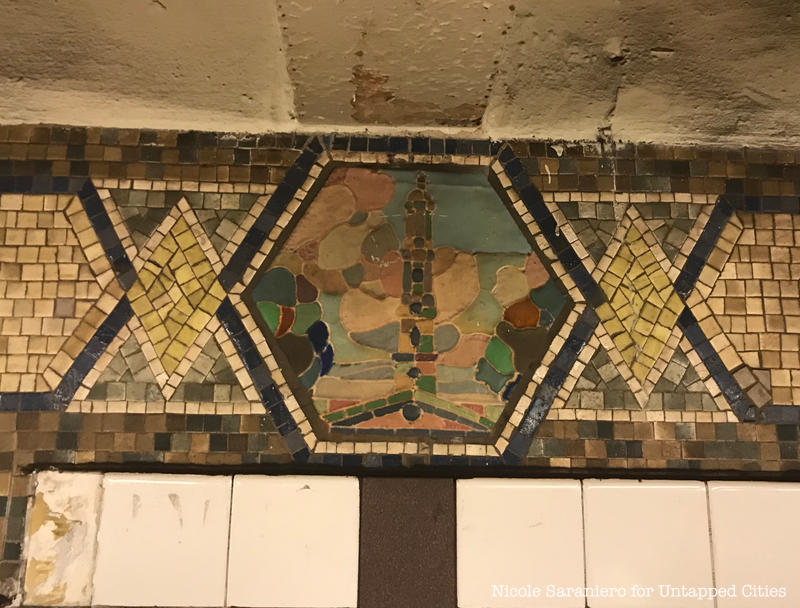2. There’s an homage to St. John’s Chapel in the Canal Street subway station

As development continued northward, and New York’s genteel society moved to Washington Square Park and Gramercy Park, St. John’s Park started to decline. But it was Commodore Cornelius Vanderbilt who put the nail in the coffin when he purchased the park from Trinity Church in 1867 and razed it to make way for St. John’s Terminal, the terminal station for his Hudson River Railroad, which earned 10th Avenue in the Meatpacking District the moniker “Death Avenue.”
With the park destroyed, St. John’s Chapel lost most of its parishioners and by 1912, it was down to one service a week. When the city decided to expand Varick Street in order to continue constructing the subway, the new plans would have made the chapel jut out into the street. There were efforts to save it, but in 1918, it was demolished. Though you won’t find any vestiges of the chapel anymore, you can see an homage to it in the mosaics at the Canal Street 1 train station.





